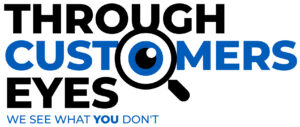Preview
8 pharmacies around Perth were anonymously visited to identify the nature of customer service given, the selling skills and product knowledge the staff displayed and the experience that the customer had.
In this case study, we will show you the process of the undercover visits carried out and how we arrived at the results.
Challenge
Our clients wanted to gain insights on the level and kind of customer service these businesses were giving their customers for a range of reasons.
The kind of service these businesses gave meant that this could possibly reflect on their bottom line.
The clients also wanted assurance that they were known for giving good service which could be an encouragement for customers to visit them and not go to their competitors around.
Outline of Results
How we identified the businesses who were giving 100% great service
8 specific pharmacies located across the Perth Metropolitan area, were visited by undercover customers.
The undercover customers had specific criteria that they had to focus on, and they were given a scenario to use to test the product knowledge and selling skills of the staff, as to why they were there and how they could be assisted.
Here are the results:
The undercover customers had to initially assess the site presentation of which all 8 pharmacies achieved 100%.
When the team performance was assessed, only 2 out of the 8 pharmacies assessed, achieved 100% in this category.
We then measured team members’ ability to somehow encourage a sale, which meant that this would directly relate to the sales figures and the bottom lines of the businesses.
4 out of the 8 pharmacies did this very well in that they achieved 100%, i.e., the team members encouraged and, in some way, asked for the business.
The other 4 pharmacies achieved 60% and below with 2 pharmacies falling in the 20% range in the assessments.
What we discovered was that team members were giving vague information on only one product that could help the “customer”. In some cases, the team members were not enthusiastic about what they were saying.
They would then put it back on the shelf without somehow encouraging/convincing the customer that that product could work for them. This lack of selling skills could seriously affect the sales figures and bottom line of these pharmacies.
The overall service was also evaluated and 3 out of the 8 pharmacies achieved 90 – 100%.
The other 5 pharmacies hovered in the 70% range.
Methodology
How were the assessments conducted?
Undercover customers anonymously entered the pharmacies initially appraising each site.
They had a specific scenario to ask a team member when approached and criteria to focus on.
The team member’s performance, in terms of greeting, determining the needs of the customer, the levels of product knowledge and selling skills and whether they attempted to encourage a sale or not, along with the way the team member farewelled the “customer” were all evaluated.
Conclusion
We identified that only 3 out of the 8 pharmacies evaluated achieved 90 – 100%.
Having this kind of knowledge for those 5 pharmacies who hovered in the 70% range could suggest that more training be given to team members on product knowledge and the art of skilful selling.
Not having these skills could potentially mean that these pharmacies sales figures and bottom line could potentially be affected.
If you want to know more about this case study or how you can identify whether your team members are contributing to your success, please contact us.

